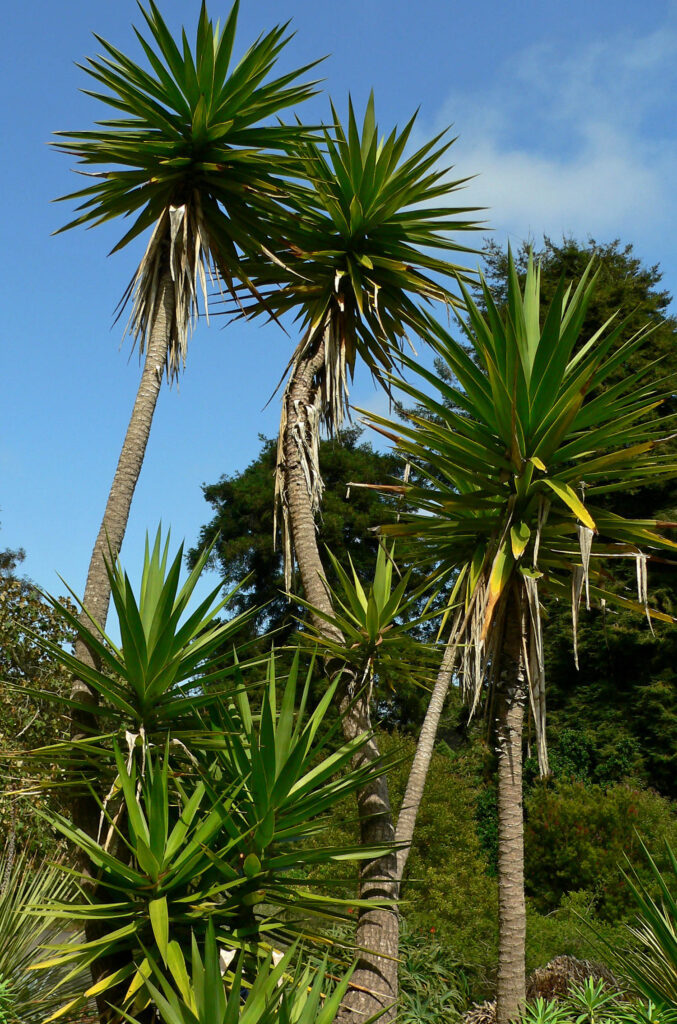Yucca seeds are slow to germinate, and many species
have a low success rate sprouting at all. The seed may even take a full year after planting to sprout.
Yucca seeds planted indoors should be started in winter, to give them as long as possible to germinate
before the next winter begins. Planting directly in garden soil is not as effective. If planting directly in
garden soil, plant in early spring.
The yucca plant should be placed in a soil mix that is 50% sand or gravel
and 50% soil. You should make sure that there is neither too much gravel nor too much soil. Yucca needs
a fast-draining soil to prevent root rot.
Yucca plants need a hot, dry environment, so give your plant access to direct sunlight. Certain yucca
species can thrive in colder or shadier locations, but these are in the minority, and typically still do well in
full sunlight.
The acceptable USDA Hardiness Zones for yucca range depending on species, from zones 4 through
11 (minimum winter temperatures of -30 to +25ºF or -34 to -4ºC), depending on your species. Zones 9
through 11 (17 to 25ºF, -7 to -4ºC) are typically safe even if you do not know your exact yucca species.
If you live in a lower or higher zone, it’s best to consult an experienced gardener or garden nursery
employee to identify your yucca species and find out what zones it will thrive in.
Place the seeds on a moist paper towel in a plastic container. Fill a container with approximately
1/4 inch (6 mm) of water. Place a paper towel on top of the water, then place your seeds on top
of the paper towel. Keep the seeds moist at 65–75ºF (18–24ºC). Keep the container at room
temperature, adding a small amount of water periodically to prevent the seeds from drying out
and going dormant again.
Some of the seeds should eventually sprout, but this can take anywhere from one month to a full year.
Once the seeds have opened up and begun to sprout, prepare individual, small pots with a mixture of
equal parts sand and compost. If these materials are not available, use any well-draining soil mixture,
typically with 30% or more sand or small gravel.
Plant the sprouted seeds, sprouting side up, 1/2 inch (1.25 cm) under the soil’s surface. Cover it with
soil and water the soil thoroughly.
Keep the sprouts in indirect sunlight and water occasionally. Let the first thorough watering almost dry
out, then water regularly to keep the soil damp, but not soaked. You should see the sprouts emerge
from the soil within a week.
For a quicker process, take a cutting from an existing adult yucca plant. After a couple years of
growth or more, yucca plants may produce offshoots near the base that grow on their own stem.
During the dormant colder season, select a stem with dark brown bark, not a young, cream-colored
stem. Cut a section off of this stem. The length and thickness of the cutting do not matter much. A
cutting 3–4 in.(7.5–10 cm) long should be sufficient.
Strip the lower leaves from the stem. Use a clean knife or scissors to remove the leaves
nearest the base, leaving the leaves on the top. With fewer leaves, the cutting will go
through less severe moisture changes, which increases the odds of it surviving the transplant until its roots can grow.
Place the cutting in a cool, shaded area. This dries the plant out slightly to encourage root growth for seeking moisture. After 4–7 days, the cutting
should be ready to plant.
Select a pot with drainage holes. Fill it with a cactus or yucca potting mix, or make your own quickly
draining soil. Two parts seed-starting mix and one part sand will provide nutrients for the young plant
without keeping it too wet. Push the stem far enough into the soil to keep it steady and upright. Often,
you’ll need to use a gentle rope or other soft line material to anchor the stem upright to another object.
Keep indoors at least two years, transferring to larger pots successively. The yucca plant may not be
sturdy enough to thrive outdoors for at least two or three years. Keep near a sunny window, but not
indirect sunlight while roots and leaves are still developing. Transplant the yuccas to a larger pot if its
roots begin to wrap around the outside of its current pot. Once the yucca plant is two or three years
old, you may plant it outside in the springtime.
When transplanting, be careful to dig deep enough to expose its entire taproot. This central,
long root can be quite long in some yucca species.
To plant potted yucca outdoors – Gently pry the yucca out of its pot. Turn the pot on its side.
Grab the yucca at the base of the stem and slowly “wiggle” it out, soil, roots, and all. Place the
yucca into the newly dug hole. Fill the rest of the hole with your soil mix and pack the soil
around the base of the stem to hold the plant in place. The roots should not show above ground.
Top the soil with 2 inches (5 cm) of granite chippings. The chippings keep the root dry at the
neck by preventing water from splashing onto it accidentally






